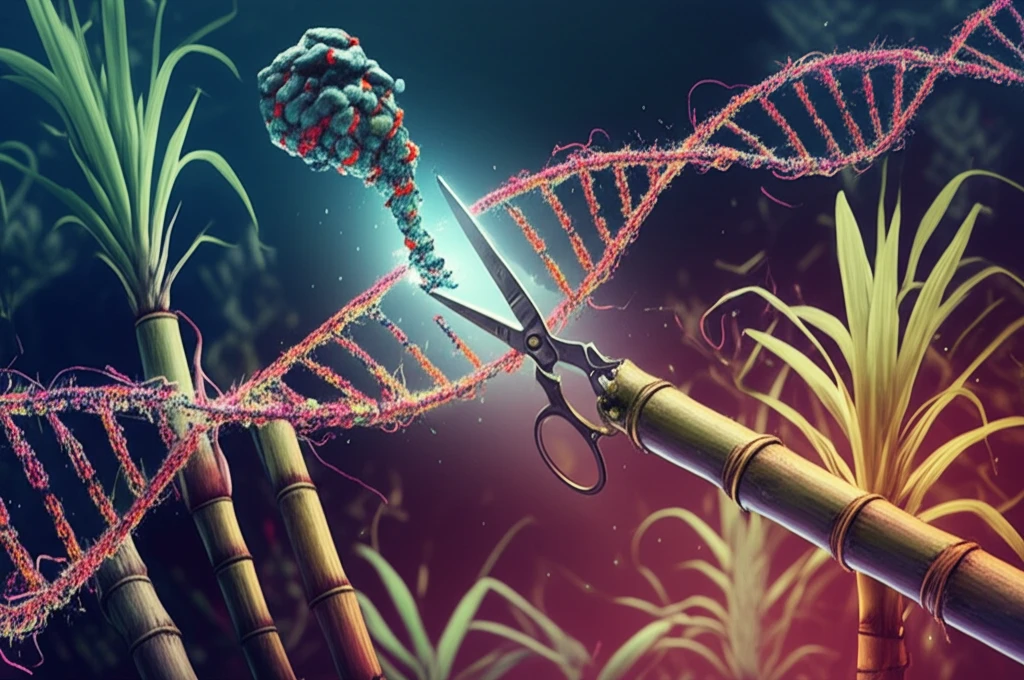
CRISPR-Cas9: The Sweet Future of Sugarcane Genome Editing
"Unlocking sugarcane's genetic potential with CRISPR-Cas9 technology for enhanced productivity and resilience"
Sugarcane, a vital crop providing the world with sugar and biofuel, faces increasing challenges from climate change and global food demands. Traditional breeding methods struggle to keep pace, constrained by the plant's complex genetics and dwindling genetic variation. But a new tool has emerged, promising to revolutionize sugarcane cultivation: the CRISPR-Cas9 system.
CRISPR-Cas9, short for Clustered Regularly Interspaced Short Palindromic Repeats and CRISPR-associated protein 9, is a groundbreaking gene-editing technology. Think of it as a highly precise pair of molecular scissors that can target specific DNA sequences within an organism's genome. This allows scientists to make precise modifications, like snipping out unwanted genes or inserting beneficial ones.
This technology holds immense potential for improving sugarcane. It offers a way to enhance disease resistance, increase sugar production, improve tolerance to drought and salinity, and even modify cell wall characteristics for better biofuel production. The possibilities are vast, and researchers are only beginning to scratch the surface of what CRISPR-Cas9 can do for this important crop.
How Does CRISPR-Cas9 Work its Magic on Sugarcane?

The CRISPR-Cas9 system works by using a guide RNA (gRNA) molecule to direct the Cas9 enzyme to a specific location in the sugarcane genome. The gRNA is designed to match a particular DNA sequence, ensuring that Cas9 cuts at the precise location desired. Once Cas9 makes a cut, the plant's natural DNA repair mechanisms kick in. There are two main pathways:
- Homologous recombination (HR): If a DNA template with the desired modification is provided, the plant can use this template to repair the break, precisely inserting the new genetic information.
CRISPR-Cas9: A Sweet Revolution in Sugarcane
CRISPR-Cas9 technology offers a powerful and precise way to improve sugarcane, addressing key challenges in agriculture. While complexities remain, the potential benefits for enhanced productivity, resilience, and sustainability are undeniable. As research progresses and regulatory landscapes evolve, CRISPR-Cas9 promises a sweeter future for sugarcane and the industries that rely on it.
